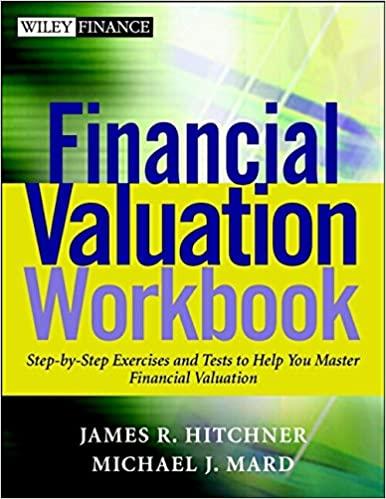Question
Assume that security returns are generated by the single-index model, R i = i + i R M + e i where R i is
Assume that security returns are generated by the single-index model,
Ri = i + iRM + ei
where Ri is the excess return for security i and RM is the markets excess return. The risk-free rate is 3%. Suppose also that there are three securities A, B, and C, characterized by the following data:
| Security | i | E(ri) | (ei) |
| A | 0.9 | 9% | 17% |
| B | 1.3 | 13 | 8 |
| C | 1.7 | 17 | 11 |
a. If M = 12%, calculate the variance of returns of securities A, B, and C. (Do not round intermediate calculations. Round your answers to the nearest whole number.)
| Variance | |
| Security A | |
| Security B | |
| Security C | |
b. Now assume that there are an infinite number of assets with return characteristics identical to those of A, B, and C, respectively. If one forms a well-diversified portfolio of type A securities, what will be the mean and variance of the portfolios excess returns? What about portfolios composed only of type B or C stocks? (Enter the variance answers as a percent squared and mean as a percentage. Do not round intermediate calculations. Round your answers to the nearest whole number.)
| Mean | Variance | |
| Security A | % | |
| Security B | % | |
| Security C | % | |
c. Is there an arbitrage opportunity in this market?
multiple choice
-
Yes
-
No
Step by Step Solution
There are 3 Steps involved in it
Step: 1

Get Instant Access to Expert-Tailored Solutions
See step-by-step solutions with expert insights and AI powered tools for academic success
Step: 2

Step: 3

Ace Your Homework with AI
Get the answers you need in no time with our AI-driven, step-by-step assistance
Get Started


